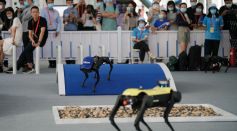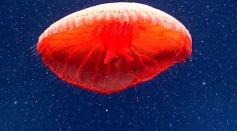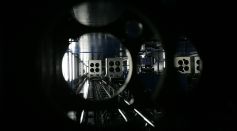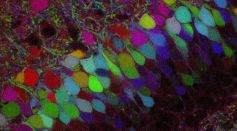TECH & INNOVATION
Birnessite Reexamined: 'Classic" Material Finds New Potential for Electrochemistry, Energy

Spot Robotic Finds Rival in Xiaomi's Much Cheaper CyberDog That Follows Its Owner, Performs Other Tricks Like Begging and Shaking Paw

Exploring the Twilight Zone: 'Undescribed' Red Jellyfish Species and Other Interesting Specimens Discovered in Atlantic Ocean

Chameleon-Inspired Robot From South Korea Changes Color in Real-Time Matching Its Background
Metamaterials Made Simpler With Kirigami for Modular, Reconfigurable 3D Structures
After Greek Letters, WHO Looks Up to Star Constellations to Name Additional COVID-19 Variants

Skoltech: Decade-Old University Teams Up With MIT for Innovative Studies

Google Wants To Recycle Hard Drives With the Help of Rare Earth Magnets

New Rocky Exoplanet Half the Mass of Venus Discovered in Another System Orbiting Star L 98-59

Artificial Neuron Can Store 'Electronic Memories,' Will It Advance Elon Musk's Neuralink Technology?

Olive Launches 'Olive Helps:' AI Coworker That Assists Human Healthcare Workers
SpaceX Starlink Ramping Up Rollout Service to Beta Test Users; Here's How to Track When It Will Come to Your Area

Lambda COVID Variant Potential Threat and Vaccine Resistance: What Will Scientists Do Now?

Superconductivity Research: Researchers Develop New Material that Enables Quantum Information-Based Technology
Most Popular

How the STEVE Phenomenon Creates a Strange Purple Aurora That Atmospheric Science Still Can't Fully Explain

How the 8 Smartest Animals Show Extraordinary Animal Intelligence and Cognitive Abilities

Could a Twin Sun or Solar Sibling Be Hiding Among Nearby Stars in Our Galaxy?

10 Fascinating Ways Trees Communicate Underground Through Mycorrhizal Networks





